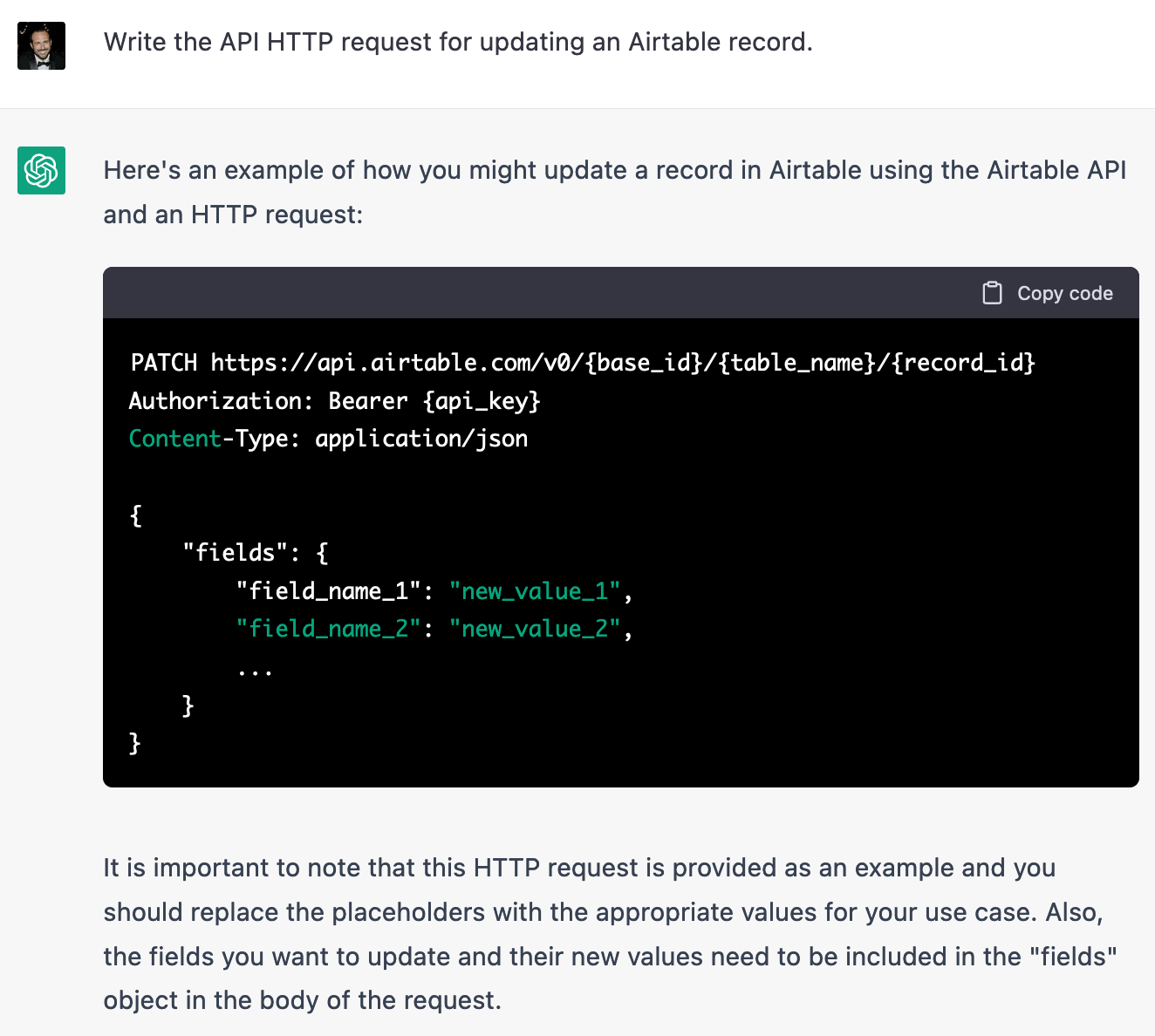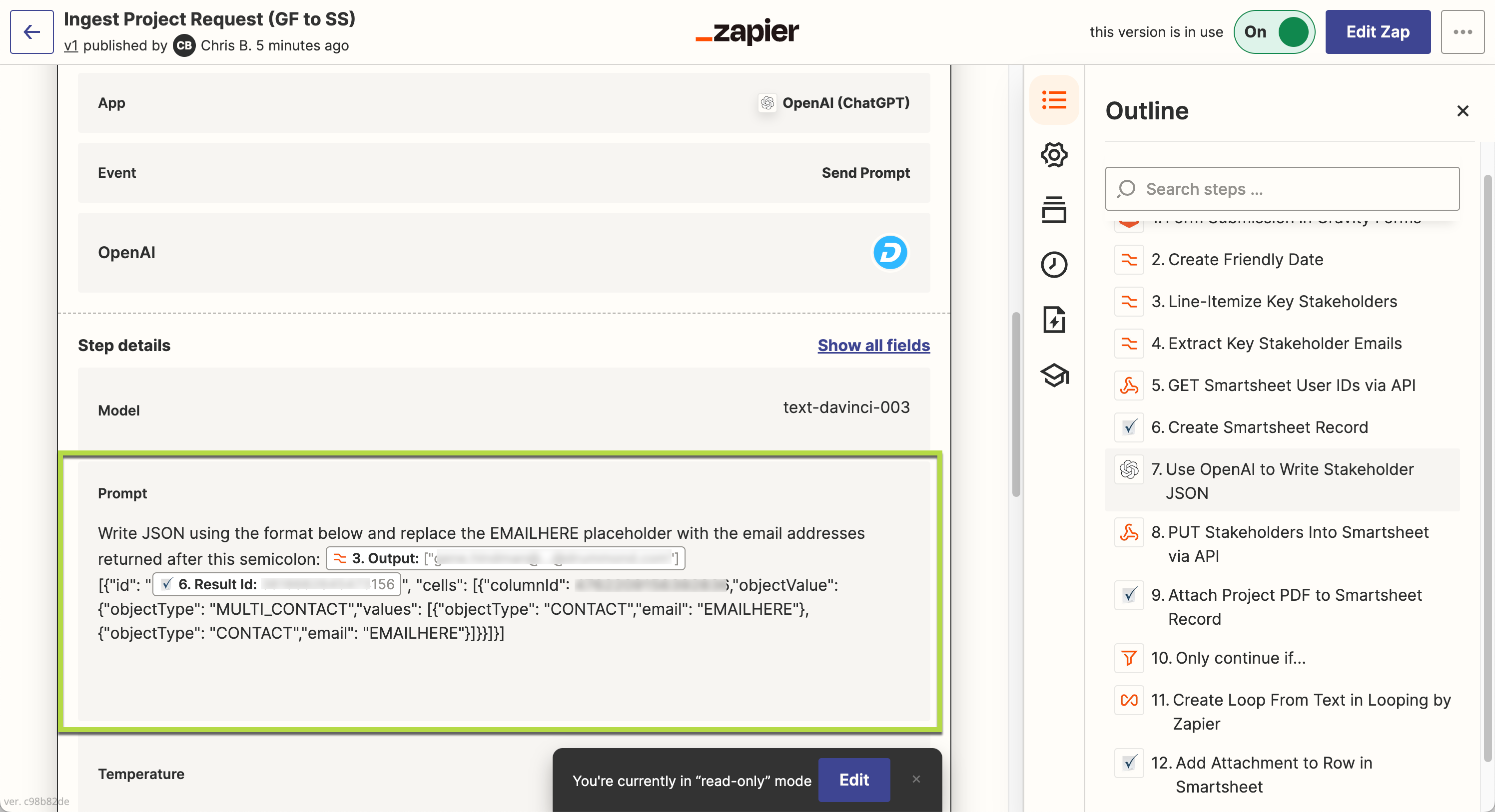Ask AI: Configure API HTTP Request for Webhook
ABOUT
Use AI to help configure an API HTTP Request for a Webhook Zap step.
APPS
- ChatGPT
- Webhooks by Zapier
- Methods: GET, POST, PUT, PATCH, DELETE
- https://zapier.com/apps/webhook/help
PROMPT
Write the API HTTP request for [XXX]
EXAMPLE





